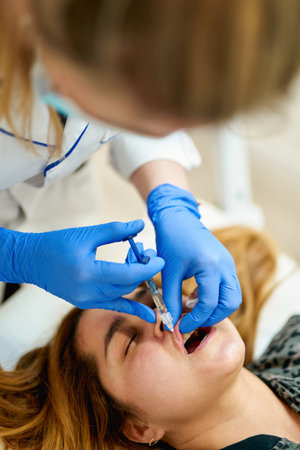Understanding Men’s Hair Loss in the UK
When embarking on the ultimate men’s hair restoration journey, it’s essential to first understand the unique landscape of male hair loss in the UK. British men experience hair thinning and balding due to a complex interplay of factors—some common worldwide, others distinctly influenced by local culture and environment. Genetics play a significant role, with male pattern baldness (androgenetic alopecia) being the most prevalent cause among British males. However, lifestyle elements specific to life in the UK, such as high-stress urban environments, dietary habits, and fluctuating work-life balance, also contribute substantially. Environmental influences cannot be overlooked either; the UK’s temperate climate, frequent rain, and lower levels of sunlight can affect scalp health and vitamin D synthesis, indirectly impacting hair growth cycles. Furthermore, pollution in major cities like London and Manchester may accelerate follicle miniaturisation. Understanding these root causes is crucial for setting realistic expectations on the journey toward effective hair restoration—and for tailoring solutions that truly address the needs of British men.
Modern Hair Restoration Treatments Available in the UK
The landscape of hair restoration in the UK has transformed dramatically over the past decade, with a robust range of modern therapies now accessible to British men. These treatments cater to diverse needs and expectations, from non-invasive clinical solutions to state-of-the-art surgical procedures. Below is an overview of the most prevalent options tailored for the UK market.
Non-Surgical Clinical Therapies
For those seeking less invasive options, several clinically proven treatments are widely available:
| Treatment Type | Description | Typical Cost (GBP) | Effectiveness |
|---|---|---|---|
| Minoxidil (Topical Solution) | Over-the-counter topical solution that stimulates hair growth and slows balding | £20-50/month | Moderate; works best for early-stage hair loss |
| Finasteride (Oral Medication) | Prescription tablet that reduces DHT, a hormone linked to hair loss | £30-60/month | High efficacy for male pattern baldness |
| Low-Level Laser Therapy (LLLT) | Medical-grade devices use light energy to stimulate follicles | £300-1000/device or £40-80/session in clinics | Emerging evidence; results vary by individual |
| Platelet-Rich Plasma (PRP) Therapy | Your own blood is processed and injected into the scalp to promote regrowth | £400-800/session (3+ sessions recommended) | Promising, especially when combined with other therapies |
Surgical Hair Restoration Solutions
Surgical interventions offer more permanent results and have become highly refined within the UK’s leading clinics:
| Procedure | Description | Typical Cost (GBP) | Recovery Time | Success Rate |
|---|---|---|---|---|
| FUT (Follicular Unit Transplantation) | A strip of scalp is removed, then dissected into grafts for transplantation | £4,000-8,000 per session | 2-3 weeks for visible recovery; minor scarring possible | 90%+ |
| FUE (Follicular Unit Extraction) | Individual follicles are extracted and implanted into thinning areas | £5,000-10,000 per session | 1-2 weeks for visible recovery; minimal scarring | 95%+ |
| DHI (Direct Hair Implantation) | An advanced FUE technique using specialised implanter pens for precise placement | £6,000-12,000 per session | 1 week for visible recovery; less downtime than FUT/FUE | 95%+ |
Bespoke Treatment Planning in the UK Context
The UK’s regulatory standards ensure all procedures adhere to rigorous safety and quality protocols. Patients benefit from personalised consultations where clinicians assess suitability based on hair type, degree of loss, lifestyle factors, and aesthetic goals. Notably, there is an increasing trend towards combining therapies—such as pairing PRP with FUE—to optimise both density and longevity of results.
Navigating Your Choices: What Matters Most?
Selecting the right treatment depends not only on clinical efficacy but also on lifestyle fit, budget, and long-term expectations. The best clinics across London, Manchester, Birmingham, and beyond provide transparent guidance on what patients can realistically expect at each stage of their restoration journey.

3. What to Expect During Your Hair Restoration Journey
Consultation: Setting Realistic Goals
Your journey with a UK hair restoration clinic typically begins with an in-depth consultation. Here, a specialist will assess your scalp, discuss your medical history, and establish realistic expectations based on your unique hair type and pattern of loss. British clinics are renowned for their thorough approach and emphasis on natural-looking results, prioritising patient education and informed decision-making. You’ll have the opportunity to ask questions about different treatment options, such as FUE (Follicular Unit Extraction) or FUT (Follicular Unit Transplantation), as well as non-surgical alternatives.
The Procedure: Precision and Care
On procedure day, you can expect a welcoming and discreet environment—a hallmark of reputable UK practices. Most clinics offer minimally invasive techniques tailored to British standards, focusing on both efficacy and comfort. The procedure may last several hours, depending on the extent of restoration required. Highly skilled technicians work under the supervision of GMC-registered surgeons to ensure compliance with strict UK medical guidelines.
Local Anaesthesia and Patient Comfort
UK clinics place a premium on patient comfort. Local anaesthesia is administered to minimise discomfort during graft extraction and implantation. Throughout the process, staff frequently check on your well-being, providing refreshments and breaks as needed—an aspect that distinguishes the patient experience in the UK from other regions.
Recovery Process: What Happens After Surgery?
Post-procedure recovery is generally swift thanks to advanced techniques used by leading British clinics. You may experience minor swelling or redness for a few days; however, most patients are able to return to work within one week—a key consideration given the UK’s fast-paced lifestyle. Detailed aftercare instructions are provided, including advice on gentle washing, medication regimes, and tips for minimising scarring.
Follow-Up Appointments and Ongoing Support
What sets UK clinics apart is their commitment to long-term results through regular follow-up appointments. These sessions enable clinicians to monitor your progress and address any concerns promptly. Access to aftercare support—whether in-person or via telemedicine—is standard practice, reflecting the UKs regulatory focus on patient safety and satisfaction.
Aftercare Products and Lifestyle Advice
You’ll receive guidance on suitable shampoos, topical treatments, and styling products commonly available in the UK market. Additionally, lifestyle recommendations—such as dietary suggestions or smoking cessation—are tailored to maximise graft survival and optimise long-term outcomes within the context of British living habits.
4. Understanding the Costs: An Insight into UK Pricing
When considering hair restoration in the UK, understanding the financial aspects is essential for making informed decisions. The costs can vary widely depending on the chosen method, location, and whether you opt for private treatment or explore NHS options. Below, we break down the typical expenses associated with men’s hair restoration journeys across Britain.
Private Clinic Fees
Most men in the UK seeking hair restoration turn to private clinics, as NHS coverage is limited to specific medical cases. The table below outlines average price ranges for popular procedures at reputable private clinics:
| Treatment Type | Average Cost (GBP) | Notes |
|---|---|---|
| FUT (Follicular Unit Transplantation) | £4,000 – £8,000 | Cost depends on graft number and clinic location |
| FUE (Follicular Unit Extraction) | £5,000 – £12,000 | Minimally invasive; higher cost due to precision work |
| Scalp Micropigmentation | £1,500 – £3,500 | Semi-permanent cosmetic option |
| PRP Therapy (per session) | £300 – £700 | Multiple sessions often required |
| Initial Consultation | £50 – £250 | May be deducted from treatment fee if proceeding |
NHS Considerations and Eligibility Criteria
The NHS generally does not fund hair restoration for cosmetic reasons. However, in exceptional cases—such as hair loss due to trauma or illness—patients may be eligible for treatment following an assessment by their GP and a referral to a specialist. Even then, waiting lists are long and availability varies by region.
Key Points on NHS Coverage:
- Alopecia Areata or totalis: Rarely funded unless causing significant psychological distress.
- Cancer-related hair loss: Some NHS Trusts provide wigs or partial financial assistance.
- Burns or trauma: Hair transplant surgery may occasionally be funded as part of reconstructive care.
Exploring Financial Support Options in the UK
If private clinic costs seem daunting, several clinics offer flexible finance plans with monthly instalments. Personal loans and credit cards are also commonly used methods. It’s advisable to compare interest rates and repayment terms before committing. Additionally, some employers’ health insurance schemes might cover part of the expense under wellness or cosmetic surgery allowances—always check your policy details carefully.
Summary Table: Typical Payment Methods for Private Hair Restoration in the UK
| Payment Method | Description/Availability |
|---|---|
| Direct Payment (Cash/Card) | Most clinics accept immediate payment after consultation. |
| Finance Plans/Monthly Instalments | Select clinics partner with financing companies; credit checks apply. |
| Personal Loan/Credit Card | Banks and lenders offer personal loans; ensure manageable APR rates. |
| Employer Health Insurance Schemes | Select schemes contribute towards elective procedures; subject to eligibility. |
This comprehensive overview equips you to budget effectively for your ultimate men’s hair restoration journey in the UK, balancing clinical quality with realistic financial planning.
5. Predicting Results and Outcomes
Understanding what to expect from your hair restoration journey is crucial, especially within the UK context where clinical standards and patient expectations align with global best practices. Realistic timelines for visible hair regrowth typically range from three to six months post-procedure, with full density often achieved between nine and twelve months. However, individual results can vary depending on factors such as age, genetics, lifestyle, and the specific technique used.
Typical Timeline for Hair Regrowth
In most UK clinics, patients are advised that initial shedding may occur within the first month after treatment—a completely normal phase known as “shock loss.” By the third month, fine vellus hairs begin to emerge, becoming noticeably thicker by the sixth month. Significant improvement in both density and coverage is generally observed at the one-year mark, allowing clients to fully appreciate the transformation.
Before-and-After Case Studies: UK-Based Clients
Consider James, a 35-year-old London professional who underwent Follicular Unit Extraction (FUE) at a reputable Harley Street clinic. Within four months, James reported early signs of new growth; by ten months, his before-and-after images highlighted a dramatic improvement in his hairline and overall density. Similarly, Mark from Manchester opted for a non-surgical PRP (Platelet-Rich Plasma) therapy combined with medical treatments. He experienced gradual thickening over eight months, with visible results captured through regular photographic documentation.
Setting Realistic Expectations
It’s important to recognise that not every patient will achieve celebrity-level thickness or uniform coverage; realistic outcomes depend on donor hair quality and adherence to aftercare protocols. UK clinics prioritise transparent consultations, providing digital simulations or showcasing previous case studies to help manage patient expectations effectively. By reviewing local case studies and understanding typical timelines, prospective clients can embark on their hair restoration journey equipped with knowledge and confidence—knowing precisely what is achievable within the British healthcare landscape.
6. Choosing the Right Clinic and Practitioner
The final stage of your hair restoration journey in the UK hinges on selecting a trustworthy clinic and an experienced practitioner. With an expanding market and countless options available, making an informed decision is crucial for both safety and optimal results.
Expert Tips for Evaluating Hair Restoration Providers
Begin by researching clinics that are not only established but also transparent about their techniques, costs, and aftercare. Look for practices with a strong online presence—genuine client testimonials on reputable platforms like Trustpilot or Google Reviews can offer valuable insights into patient satisfaction and long-term outcomes.
Understanding UK Regulations and Certifications
In the UK, hair restoration clinics should be registered with the Care Quality Commission (CQC) in England or the relevant health authority in Scotland, Wales, or Northern Ireland. Practitioners should hold memberships with professional bodies such as the British Association of Hair Restoration Surgery (BAHRS) or the International Society of Hair Restoration Surgery (ISHRS). These affiliations indicate adherence to high standards of safety, ethics, and ongoing education.
Consultation: A Critical Step
A reputable clinic will offer a thorough consultation led by a qualified medical professional—not just a sales advisor. This session should include a detailed assessment of your hair loss pattern, discussion of realistic expectations, and clear information about potential risks. Avoid providers who promise guaranteed results or push you toward unnecessary procedures.
Transparency and Aftercare
Trustworthy practitioners provide comprehensive cost breakdowns upfront, outlining what is included in your treatment plan. Ask about aftercare protocols and support; post-procedure follow-up is essential for monitoring healing and maximising your investment.
Final Considerations
Selecting the right clinic in the UK is about more than price—it’s about safeguarding your health and achieving natural-looking results that last. Take time to verify credentials, ask probing questions during consultations, and compare multiple providers before committing. Your diligence will pay dividends throughout your ultimate men’s hair restoration journey.


